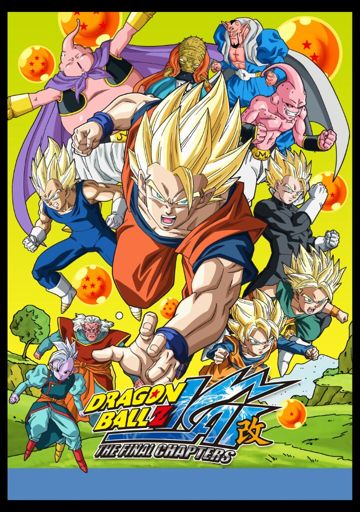
"Gohan ga Sensei! Bīderu no Bukū-jutsu Nyūmon" (悟飯が先生! ビーデルの舞空術入門) April 20, 2014ğebruary 11, 2017ġ05 (102) "The Dragon Team, All Assembled! Son Goku has Returned!!" / "The Dragon Team Fully Assembled! Goku Has Come Back!" "Barechatta! Nyū Hīrō wa Son Gohan" (バレちゃった! 新(ニュー)ヒーローは孫悟飯) ApJanuary 14, 2017ġ01 (N/A) "Videl's Crisis? Gohan's Urgent Call-out!" – January 21, 2017ġ02 (N/A) "A Monster is Taken Away! The Culprit is Great Saiyaman?" – January 28, 2017ġ03 (N/A) "Entering the World Martial Arts Tournament! Goten Shows Off His Explosive Power During Training!" –ğebruary 4, 2017ġ04 (101) "Gohan is the Teacher! Videl’s Introduction to Flight" / "Gohan the Teacher! Videl's Flying Technique Tutorial" The "World Tournament Saga" all takes place in a row.ġ00 "Found Out! The New Hero is Son Gohan" / "A New Hero, Great Saiyaman, Is Born!" As the Boo arc was produced after the mandate, it’s likely Toei chose to stick with 16:9 from the start in an attempt to save time and money on producing two versions.I'm fine with it being 2 seasons only, I think the "Specials" need to be changed and added back into Season 2 where they belong and make sense as part of the story.
#Dragon ball z kai the final chapters buu rays series#
As the series had already been scanned and remastered in its original aspect ratio, a selective crop was done for the TV broadcast, while the original 4:3 version was used on the home release. Kai’s first iteration began production prior to Japan’s television standards mandating a 16:9 aspect ratio for new broadcasts. Either way, the show is drastically green, requiring more than simple color balance edits to fix. It’s unclear exactly how the image ended up green a popular theory involves improperly calibrated monitors (though professionals should also use color histograms). The Boo arc was produced cheaply in-house at Toei Animation, resulting in a substantial difference in quality. Though not exactly known for quality remasters, QTEC handled Kai well, producing a solid, if slightly soft remaster. Q: Why is the Boo arc 16:9 and tinted green, while the first iteration had accurate colors and the original aspect ratio? Kai’s initial run was outsourced by Toei to a company called QTEC, who handled the general remaster of the film (color correction, clean-up, etc.). For more on the two versions, see Kanzenshuu’s write-up.

After Toriko failed, the Boo arc of Kai would eventually air in Japan, though slightly altered from the original edit that has now made its way to international shores. While no official reason has ever been given for Kai’s revival, the most likely conclusion is that the demands and sales of overseas rights-holders (particularly FUNimation) were strong enough to warrant continuing. Q: If Kai failed, then why is it back? Despite Kai being off-air in Japan, just over a year later, Mayumi Tanaka (Kuririn) revealed on her blog that, while Kai would not be continuing in Japan, she and the other voice actors were currently recording the Boo arc for overseas audiences.
For more info, see Kanzenshuu’s feature on the subject. (Merchandise ultimately funds the production of shows in Japan.) Toriko’s anime adaptation would eventually replace Kai, though it ultimately met the same fate. This pattern extended to video games, sealing the fate of Kai. Based on Toei’s fiscal reports, DB’s licensing sales peaked in 2007, reaching an all-time low by the end of FY 2011, and Namco-Bandai reported a similar decrease in merchandising sales. Q: Why did Kai originally end at Episode 98? Despite solid TV ratings and a boost in new fans, Kai failed to generate the intended resurgence in the popularity of DB. Part 2 (episodes 122-144) is scheduled for May 23 and is also available for preorder on Blu-Ray and DVD. Q: Where can I buy "The Final Chapters"? The home release for Part 1 (episodes 99-121) has been scheduled for April 25, and it is available for preorder on Blu-Ray or DVD.

A few major characters were recast, notably: kid Gohan, Bulma, Freeza, and #18. The dub recordings are entirely new in Japanese and English, mostly with the same cast in both languages, and the FUNimation version in particular is a major improvement both in terms of translation accuracy and voice acting.

The animation is the same footage for the most part, but it is remastered and occasionally touched up. Q: What is Kai? How is it different from Z? And why are there two episode numbers? Dragon Ball Kai (called Dragon Ball Z Kai by FUNimation) is a condensed release of Z that attempts to follow the manga more closely the series was reduced from 291 episodes to 167, or 159 for the Japanese version which pared 8 more episodes from the international version of the Boo arc, hence the double episode numbers.


 0 kommentar(er)
0 kommentar(er)
